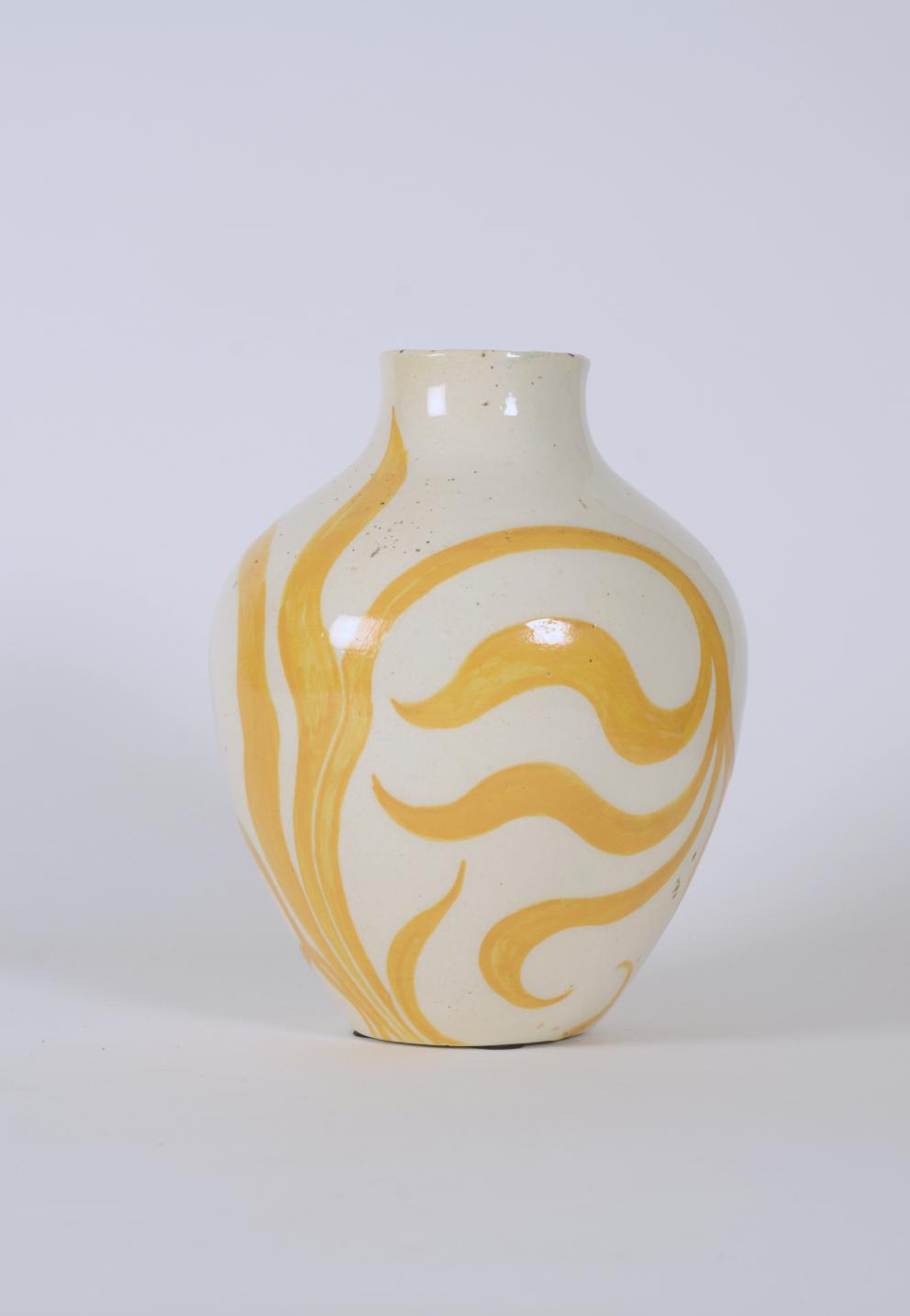A vase by Alfred William Finch (1894)
At the close of the 19th century, ceramics were primarily used for mass-producing functional objects, a process made possible by industrialisation. Rooted in traditional shapes and patterns, the medium offered little creative freedom to designers.
The Universal Exhibitions in Paris of 1867 and 1878 nevertheless marked a turning point in the “arts of fire”. These exhibitions introduced high-quality glazed Japanese ceramics to Western audiences, elevating ceramics to the level of fine art. This newfound fascination with ceramics strongly resonated with William Finch, a Neo-Impressionist painter, who in 1890 committed himself entirely to the medium, transforming it into a platform for avant-garde expression.
In 1894, when he creates this vase, Finch has already been working for a year at the Virginal factory. He uses a very white, opaque clay, like the ‘fine earthenware’ from the Kéramis factory, where he had worked previously. This white and yellow vase, in contrast to other contemporary pieces by the artist that show irregularities, appears to have been shaped by a more skilled craftsman. The design, however, reflects Finch's decorative experimentation, influenced by the arts of fire of the Far East. On a white background, flowing yellow organic forms ripple and wrap around the curve of the vase.
Thanks to his connections, Finch's vases are included works of total art by Henry Van de Velde, Victor Horta, Gustave Serrurier-Bovy and Henri de Toulouse-Lautrec.
Discover the vase by Willy Finch in the temporary exhibition Belgian Art Nouveau.


